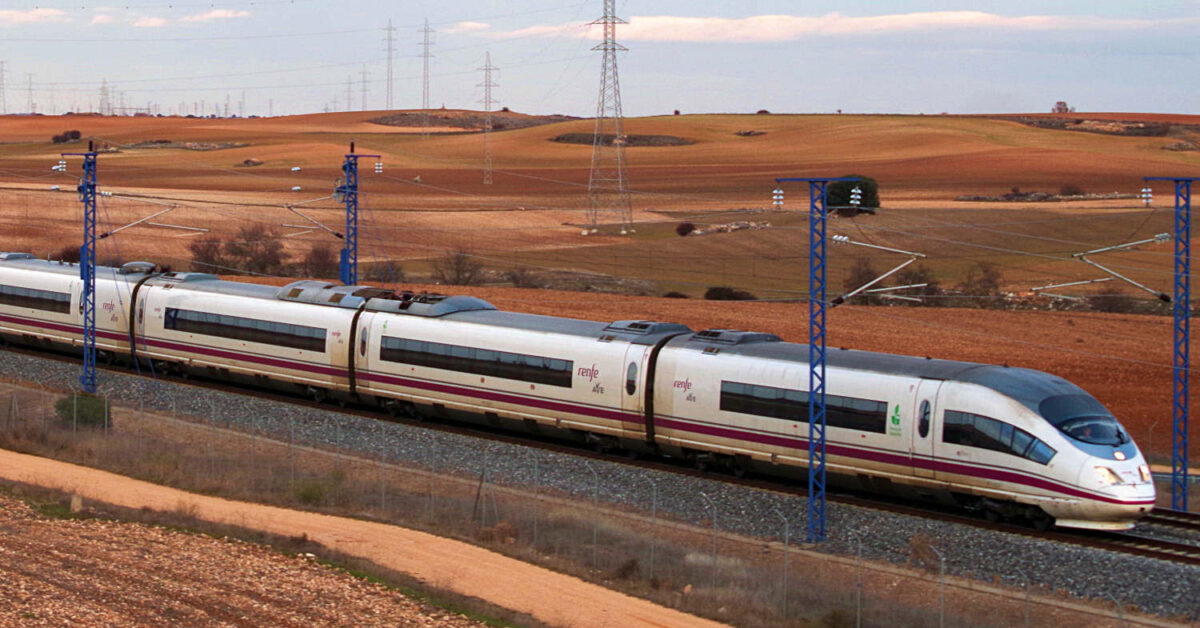Spain’s Minister for Transport and Sustainable Mobility has announced, during an Europa Press breakfast briefing, that Adif Alta Velocidad will upgrade the Madrid–Barcelona high‑speed line to support 350 km/h operation. Works are set to start soon and will enable journeys between the two cities to be completed in under two hours.
The Ministry’s goal is to adapt the entire high‑speed network, yet this corridor has been prioritised as it is due for a full renewal similar to the one now taking place on the Madrid–Seville HSL. Tendering for the feasibility studies is expected to open tomorrow.
The comprehensive renewal will be carried out by sections, kicking off between Puerta de Atocha and Calatayud. This stretch is considered the one in poorest condition and is where cracks were reportedly found in the bogies of Class 106 trains.
Trenvista Premium te lleva directo, sin anuncios que hagan descarrilar tu lectura ni tu paciencia.
Únete por sólo 35€ al año, disfruta de contenidos exclusivos, más ventajas y cancela cuando quieras.
★ Empieza ahora
350 km/h on the Madrid–Barcelona HSL to ease congestion
Aside from trimming journey times between Spain’s two main cities, raising the top permissible speed by 50 km/h aims to boost line capacity. With shorter run times, more train paths can be slotted within the same time window.
Puente also announced new approach routes into both Madrid and Barcelona to further cut journey times. In Madrid, the new alignment will serve the future Barajas Airport high‑speed station.
The outcome: the trip between Madrid and Barcelona will take less than two hours.
What about the rolling stock?
Not all current rolling stock will be capable of reaching this upgraded speed. At present, only the Class 103 units (Siemens Velaro E) are certified for 350 km/h commercial service.
Of the remaining fleet, the Class 109 sets—known as Iryo’s Frecciarossa 1000—are designed for 360 km/h operation and could be certified for the new commercial speed.
Ouigo’s Class 108 trains are designed for a 320 km/h ceiling, while Talgo‑built series (Classes 102, 106, 107, and 112) can reach roughly 330 km/h.
Ballast flight: the current limitation
Most high‑speed lines were engineered for a 350 km/h design speed, and Madrid–Barcelona was the first to reach that threshold. Yet, as the Minister pointed out, ballast flight prevents safe operation at that velocity. This aerodynamic phenomenon occurs when stones are sucked upward by passing trains, striking the underframe and later settling where they can cause damage or obstruction.
In other countries, this issue is tackled by building slab track. However, Adif has developed a special type of sleeper that helps to mitigate the problem of ballast flight. Known as the “aerosleeper”, it will be installed on the Madrid–Barcelona high‑speed line.
This design improves aerodynamic performance and prevents ballast from lifting when trains run at such high speeds.
Only its implementation, together with overall infrastructure upgrades and the reactivation of ERTMS Level 2, stands between the Madrid–Barcelona route and a top operating speed of 350 km/h.
The comprehensive renewal of the line was already planned, and according to Puente, while aerosleepers are more expensive, their inclusion will not significantly increase the overall cost of the upgrade.
